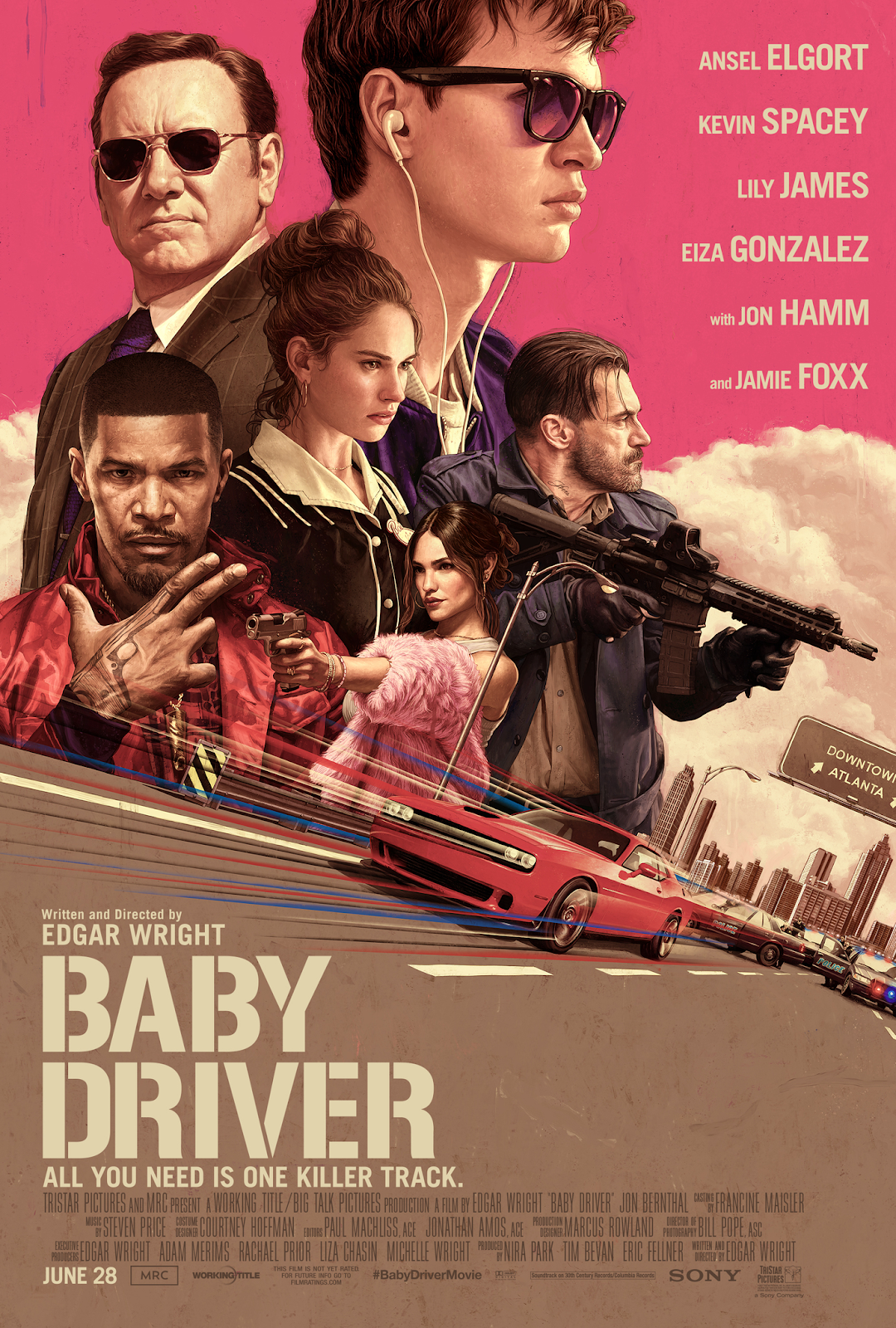Edgar wright, a 48 year old director from Dorset England, is one of the most unique, quirky, and creative directors in modern cinema. During his long career he has written, directed and produced a variety of wildly popular films. A few workth mentioning are Shaun of the Dead (2004), Baby Driver (2017), Scott Pilgrim vs. The World (2010), The World’s End (2013), and Hot Fuzz (2007). Even with his more famous works coming from mostly over a decade ago, Wright is still pumping out smash hit films. His latest work Last Night in Soho (2021) is currently nominated for the BAFTA Outstanding British Film of the Year. He at present has been nominated for 48 awards as well as wining 17 awards throughout his career.

So how does an individual not only create a large spectrum of work that has been massively successfull, but also has spanned genre after genre and still found success? Well for Wright, its not that simple. He doesn’t write for scripts he think will succeed. He creates stories that he wants to tell, that he enjoys. IN describing his process of creating his film The Worlds End wright said “There’s one [pub] particular one that Simon and I used to meet in before we’d go to the cinema, and I always thought it was a weird thing to say, “Oh, I’ll see you at The World’s End.” [Laughter] “I’ll meet you at the World’s End” just struck me as a weird thing to say. So I thought, “Hmm, bag that for later.”” Wright’s beer filled pub adventure that became The Worlds End was derived from his own experience and his own interest. He saw the world around him as he would meet actor and frequent collaborator Simon Pegg at Worlds End Pub, and took the extrinsic motivation of the pub experience to construct his film. He experiences the world around him, and during his writing process distills his experience to create cinema.

Outside motivation and creativity are at the forefront of Wright’s creations. In particular his film Baby Driver won a grammy for its soundtrack, which was used in one of the most unique and fascinating ways that have been shown on screen. Music in the film is a masterpiece of interactino between story and music ever shown in film. Every song played throughout the film is both an intrinsic and extrinsic sound as it conveys emotion to the audience as it overlays scenes, as well as serving as the music the main character is listening to throughout the film. In an interview with pitchfork, Wright said “It was as close to synesthesia as I’ll probably ever come: ‘When I listen to this song, I think of a car chase—what is the movie that goes with this vision?” Wright takes the music and influences of the world around him and adapts it into his films. He allows the outside work to influence and inspire him, and constructs his creative works around them, as exemplified in Baby Driver.

Baby Driver for Wright serves as the pinnacle of Wright’s career. He said in an interview with Pitchfork that the film was the result of decades of thought. In the interview Wright said, “I’ve been thinking about the movie for a number of years, so for quite a while I've been thinking, “This is a good Baby Driver song.” The Damned one [“Neat Neat Neat”]—that’s a song that I’ve loved for a long time, and I’ve never heard in a movie, so I thought. Also, a lot of the songs in the movie had some interesting things happening structure-wise—tempo changes, breakdowns, loud and quiet bits. I’m always trying to find songs that have sections like that. When I actually sat down to write the movie, had earmarked about 10 songs: Jon Spencer, the Damned, the “Tequila” cover, “Hocus Pocus” [by Focus], Blur [“Intermission”], the Barry White song [“Never, Never Gonna Give Ya Up”], the Queen song, and some others.” Wright has been recieving outside inspiration through the creative works of others to influence his film. Before evern writting a word he had imagined a story in which these songs could exist in a cohesive manner. Wright also said that this film first came into throught while listening to music in 1995 while editing his first film. Just going to show his creative process has been a life time of thought and inspiration.

And to add more mehod to the madness of Wright, he geniusly revolutionized movie sound design as he actively incorporrated this extrinsic-intrinsic music by making it correlate with the world of the film. He said, “Before I'd written a word, I said to Mark, “Hey, could you dub gunshots onto this drum solo so I can map it out?” Then I wrote the scene, did storyboards, and edited the storyboards to the music, so then you can have an animatic. Then we would literally make everyone learn how to fire to their little drum parts. It's kind of an insane thing to go through with people, but it totally works. It's like, “Okay, so your bit is this: ‘Bam ba-bam bam bam.’ And your bit is this: ‘Da da da-da-da.’” Throughout Baby Driver the sound of the music playing serves as both a geniusly interesting soundtrack, as well as a guide for the explosions, driving, gunshots, and even scenes as mundane as the main character walking down the street to get coffee. Wright captures the way in which individials soundtrack their own lives with headphones and music. He took the way in which people listen to music to feel emotion and experience the world, and tied that feeling into his movie.

This for Wright is his creative process. In the same way people collect music that speaks to the emotions they feel and resonate with, Wright collects songs that he is inspired to put into movies, “When we were writing the film, one of the first things we did was make this playlist of songs from about 1988-1993, and it was about 200 tracks long. We just used to listen to it on shuffle and then very quickly the songs that really meant something story wise would all come to the top. Even Gary King’s [Simon Pegg] anthems would be hedonistic party anthems like, “Loaded,” “Unfree,” “Step On,” by the Happy Mondays; those kinds of songs were the ones he would live by. All of the songs had something to do with it, even the song titles are totally on the nose. Like “Fool’s Gold,” by The Stone Roses is over the scene where he’s looking over at someone else’s beer. He’s going to drink someone else’s beer, which is fool’s gold [Laughter]. It literally says fool’s gold as he’s looking at the beer saying, “you are fool if you’re going to drink someone else’s lager.’ I always though about the song; what the fool’s gold could be, and so I just though it could be lager.”

Edgar Wright is truly a unique, inspired, and wildly creative director. Very few else have navigated the world of cinema as he has and found success everywhere. From classic comedy (Shaun of the Dead), to genre defining science fiction (Scott Pilgrim vs. The World), to groundbreaking inovative action (Baby Driver). I truly recomend watching any of Edgar Wright’s work; Baby Driver in particular. If you have ever listened to a song and think to yourself ‘this sounds like a chase scene’ or ‘this sounds like a horor movie’, that same thought process and same inspiration is what Edgar Wright draws from as he creates what can only be called a masterpiece of film.
If you found this interesting, here are some creative facts from Wright’s movie Baby Driver that just showcase how truly fun and creative Wright’s works are:
- listen to the film with headphones, and every time Baby (the main character) takes an ear bud out, the movie soundtrack will only play through the headphone which Baby still has in.
- When Baby goes to the coffee shop he passes a grafiti black heart in the background. Once he sees Debora (the love interest) the grafitti heart turns red the next time it is shown
- During the carjacking scene, the song was too short to fit the full scene, so Wright wrote into the script Baby rewinding the music to creatively solve his music problem.
- During the coffee run scene, throughout the shot, graffitti, signs, and actions match the music exactly
There are many more fun little easter eggs so give it a watch and see what you can find!
https://www.denofgeek.com/movies/interview-with-edgar-wright-director-of-the-worlds-end/
https://bulletproofscreenwriting.tv/edgar-wright/
https://pitchfork.com/thepitch/behind-the-music-of-baby-driver-with-director-edgar-wright/
https://collider.com/baby-driver-trivia-edgar-wright/




























